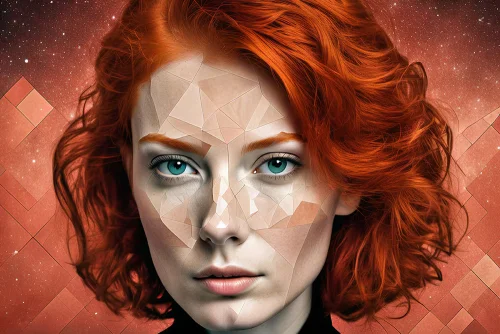AI image generation has democratized digital art, allowing anyone to turn a simple text description into a compelling visual. However, the quality of the output is directly proportional to the quality of the input. Mastering the art of prompt engineering—the process of crafting clear and descriptive prompts—is the key to moving from generic, unpredictable results to creating images that precisely match your creative vision.
Table of Contents
This guide will break down the fundamental techniques for writing effective prompts, from establishing a strong subject to refining your image with specific artistic and technical details.
🧭 How to Start with a Clear Subject
The foundation of every great AI image is a strong, unambiguous subject. The model needs to know what the primary focus of the image is before it can begin to fill in the details. Vague prompts lead to vague images.
Start with a simple noun phrase that describes the “who” or “what” of your image. Then, build upon it with essential context like setting, lighting, and atmosphere.
| Weak Prompt (Lacks Detail) | Strong Prompt (Clear Subject & Context) |
a cabin | A weathered, moss-covered log cabin nestled in a dense, misty pine forest at sunrise. |
a robot in a city | A sleek, chrome-plated android standing on a rain-slicked neon-lit street in a futuristic Tokyo. |
fantasy character | Portrait of a wise, elderly elf wizard with a long white beard, wearing dark green robes and holding a glowing staff. |
Think of the initial subject as the headline. It should be descriptive enough to stand on its own before you add modifiers for style and composition.
⚙️ How to Specify Composition and Style
Once you have a clear subject, the next step is to act as the “director” and “cinematographer.” Tell the AI how to frame the shot and what artistic style to use. This is where you can guide the model toward a specific aesthetic.
Using Camera and Lens Terminology
Including photographic terms gives you incredible control over the final image’s composition and feel.
- Shot Type:
close-up,medium shot,long shot,extreme wide shot - Angle:
low angle,high angle,eye-level,dutch angle - Lens:
35mm lens,85mm portrait lens,macro lens,fisheye lens - Lighting:
cinematic lighting,soft diffused light,dramatic backlighting,golden hour - Orientation:
portrait orientation,landscape orientation,square aspect ratio
Defining Artistic Style
This is how you define the overall look and feel. Be specific and, if possible, name artists or art movements known for the style you want.
- Art Medium:
oil painting,watercolor sketch,charcoal drawing,linocut print - Artistic Style:
impressionist,surrealist,art deco,cyberpunk illustration - Rendering Engine:
Unreal Engine 5,Octane render,photorealistic,trending on ArtStation
| Prompt without Style/Composition | Prompt with Style/Composition |
A knight in armor | **Extreme close-up shot** of an ornate, battle-worn knight's helmet, **dramatic cinematic lighting**, **photorealistic**, rendered in **Unreal Engine 5**. |
A cat sleeping | A fluffy ginger cat curled up on a sunlit windowsill, **soft focus background**, **warm natural lighting**, **shot on a 50mm lens**, style of a cozy **Studio Ghibli anime**. |
📌 How to Avoid Common Mistakes and Refine Results
Crafting the perfect prompt is an iterative process. Understanding what to avoid and how to refine your ideas will significantly speed up your workflow.
From Vague to Concrete
Abstract words are the enemy of good prompts because they are subjective. The AI doesn’t know what your definition of “beautiful” or “epic” is. Instead, describe the visual elements that create that feeling.
- Instead of
a beautiful landscape, tryA vibrant sunset over a calm mountain lake, with reflections of the orange and purple sky on the water's surface. - Instead of
a futuristic car, tryA sleek, aerodynamic flying car with glowing blue thrusters and no wheels, hovering over a city of towering skyscrapers. - Instead of
a scary monster, tryA shadowy creature with long, spindly limbs and glowing red eyes, lurking at the end of a dark, narrow hallway.
Using Negative Prompts
Most AI image platforms allow you to use “negative prompts” to specify what you don’t want to see. This is incredibly useful for cleaning up common AI mistakes or removing elements that clash with your vision.
| Prompt Example |
Prompt: High-quality photo of a person's hands holding a coffee mug. |
Negative Prompt: ugly, deformed, disfigured, extra fingers, mutated hands, poorly drawn hands, blurry, low quality |
This technique helps guide the AI away from its known weaknesses, resulting in a cleaner and more coherent final image. By combining a clear subject, precise composition, and iterative refinement, you can consistently generate AI images that bring your unique ideas to life.
More Topics
- How to Compare and Choose Modern Shells Beyond Bash
- How to Organize Large Photo Collections with KPhotoAlbum
- How to Build a Physical Computing Project with Raspberry Pi
- How to Safely Automate Sysadmin Tasks with Bash Scripts
- How to Get Started with Apache OpenServerless
- How to Install and Customize Deepin 25
- How to Design Logical Puzzles to Test AI Reasoning

